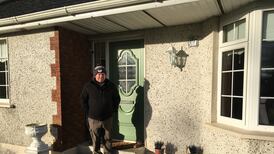ANALYSIS:In his state of the union address the US president displayed a lively self-assurance and assertiveness
The images of a smiling Barack Obama hand-pumping and back-slapping his way through Democrats and Republicans on his way to the podium to deliver his fourth state of the union address contrasted with the assertive president lecturing Congress in his speech and challenging them to mould the liberal America he wants.
Laying out in detail a progressive agenda of legislative reform sketched out in last month’s inaugural address, the president with an as-yet-unfinished legacy harangued Republicans to set aside bitter bipartisanship to bridge the gap between rich and poor, and enrich the middle class to save a weak US economy, the main focus of his speech.
In a dense first half of an hour-long speech, Obama pitched himself as a president who doesn’t believe in big government but “a smarter government that sets priorities and invests in broad-based growth” as he sought to balance the the demand of Republicans for deep spending cuts with a need to spend selectively.
He called for expenditure on education, infrastructure, green energy, subsidies for manufacturing and universal preschool. “Most of us agree that a plan to reduce the deficit must be part our agenda. But let’s be clear: deficit reduction alone is not an economic plan,” he said.
Federal spending
Obama’s anti-austerity message marks him out from predecessors – Ronald Reagan complained that “government is the problem” while Bill Clinton declared that the “era of big government is over” (even though US federal spending in fact tripled since 1996). It also sets up many more fights with Republicans who want deep spending cuts.
Unlike previous state of the union addresses that tended to be dreary wishlists, Obama displayed a lively self-assurance and assertiveness he has shown since his election win in November, knowing that Republicans are on the ropes and suffering an existential crisis that makes them question policies they oppose.
“Take a vote, and send me that bill,” “let’s get it done,” and “I will sign it right away,” the president goaded Congressional Republicans, calling on them to pass legislation to help American homeowners secure lower mortgage rates and reform immigration laws to deal with the 11 million illegal immigrants.
Obama saved his hardest oratorical punches for the emotive issue of his gun control proposals, naming the recent notorious gun massacres – Newtown, Aurora, Oak Creek and Tucson – repeating after each that the victims “deserve a simple vote” from Congress. His exhortations were all the more powerful accompanied by television close-ups of the family members of victims invited to the chamber for his speech.
‘Hot button issues’
Democratic strategist Chris Lehane said the president’s blueprint for the next year specifically focused on “hot button issues” that will be popular with the middle class and put Republicans in a position of opposing popular “kitchen table issues”.
“The speech reflects the president’s understanding – and what he learned in the first term – that to govern in the current age of political gridlock he needs to leverage the power of the bully pulpit to put the Republicans in position of either opposing popular issues or supporting the president’s programme,” he said.
The pugilistic president also has one eye on the clock – he has a narrow window of time to force through major legislation on immigration and gun control, and resolve the precarious fiscal position before the midterm election campaigns kick off in the autumn, distracting politicians from contentious issues.
“The president has about the next 18 months to make progress – the Republicans will try to milk the clock and this speech makes clear the president intends to force the tempo,” said Lehane.
Obama targeted Republicans as the bad guys should they resist “common sense” reforms he has proposed for ordinary Americans. His strategy was clear – speak to the grassroots to pressurise Republican politicians when there is little chance of forcing through change in a GOP-controlled House of Representatives. No Democratic president has ever achieved the kind of domestic reform Obama is targeting without a Democratic Congress.
The “key to the puzzle” for the president is to make Republicans fear a groundswell of public support for his policies if he cannot get them to support changes for their constituents, said Allan Lichtman, a political history professor at American University in Washington DC.
“The politicians themselves are not going to change; they’re only going to do so if forced by the people,” he said.
If Obama’s strategy backfires and he loses further ground in the midterm elections without securing his ambitious changes, Congress could end up as ungovernable as in his first term, and his legacy would go unfulfilled.







